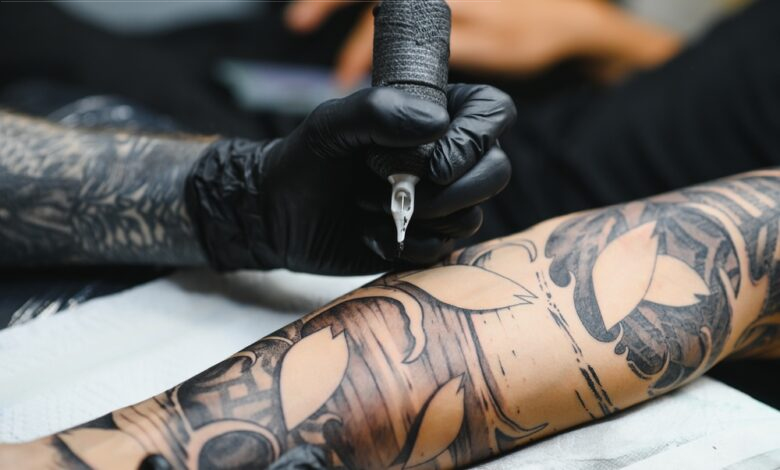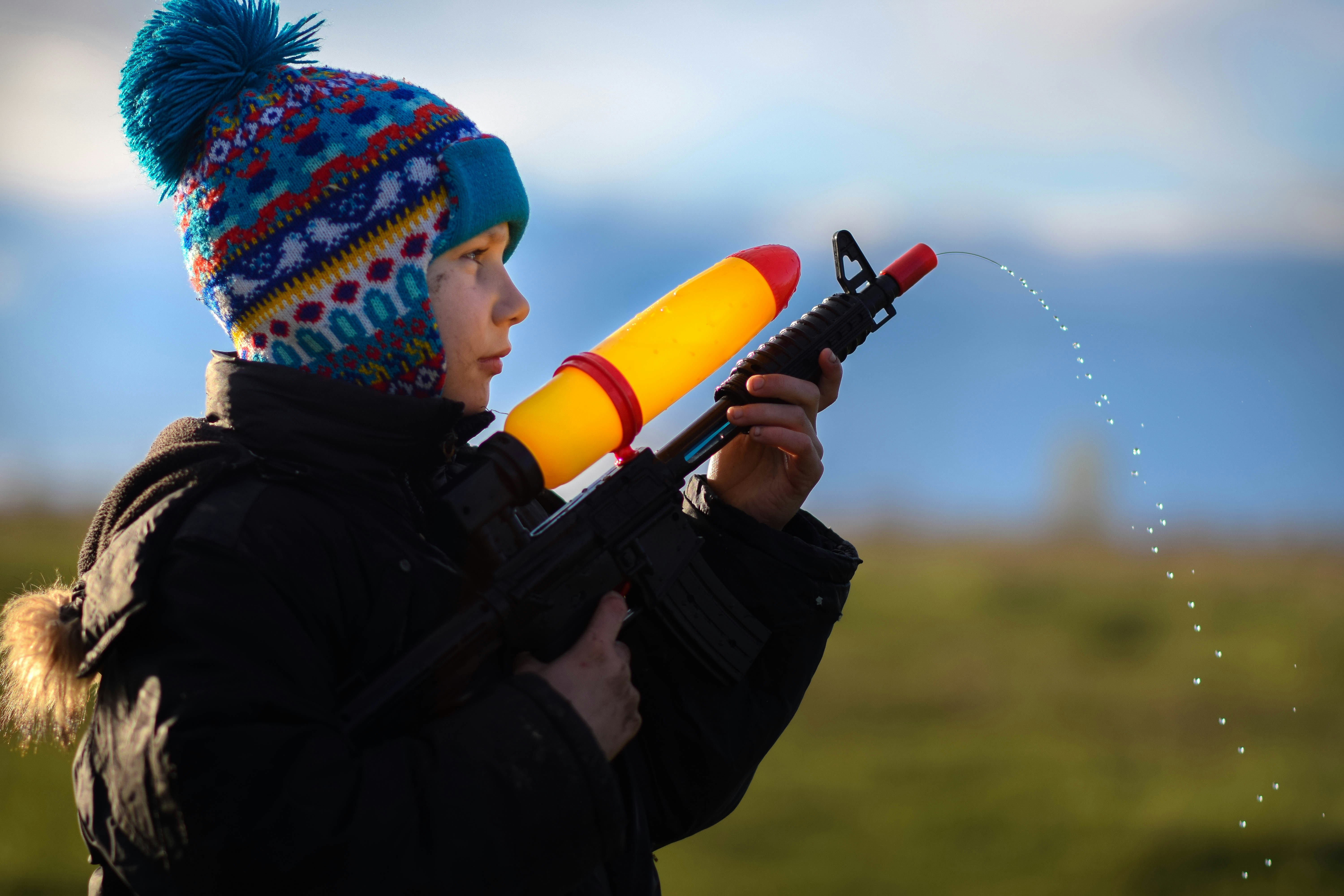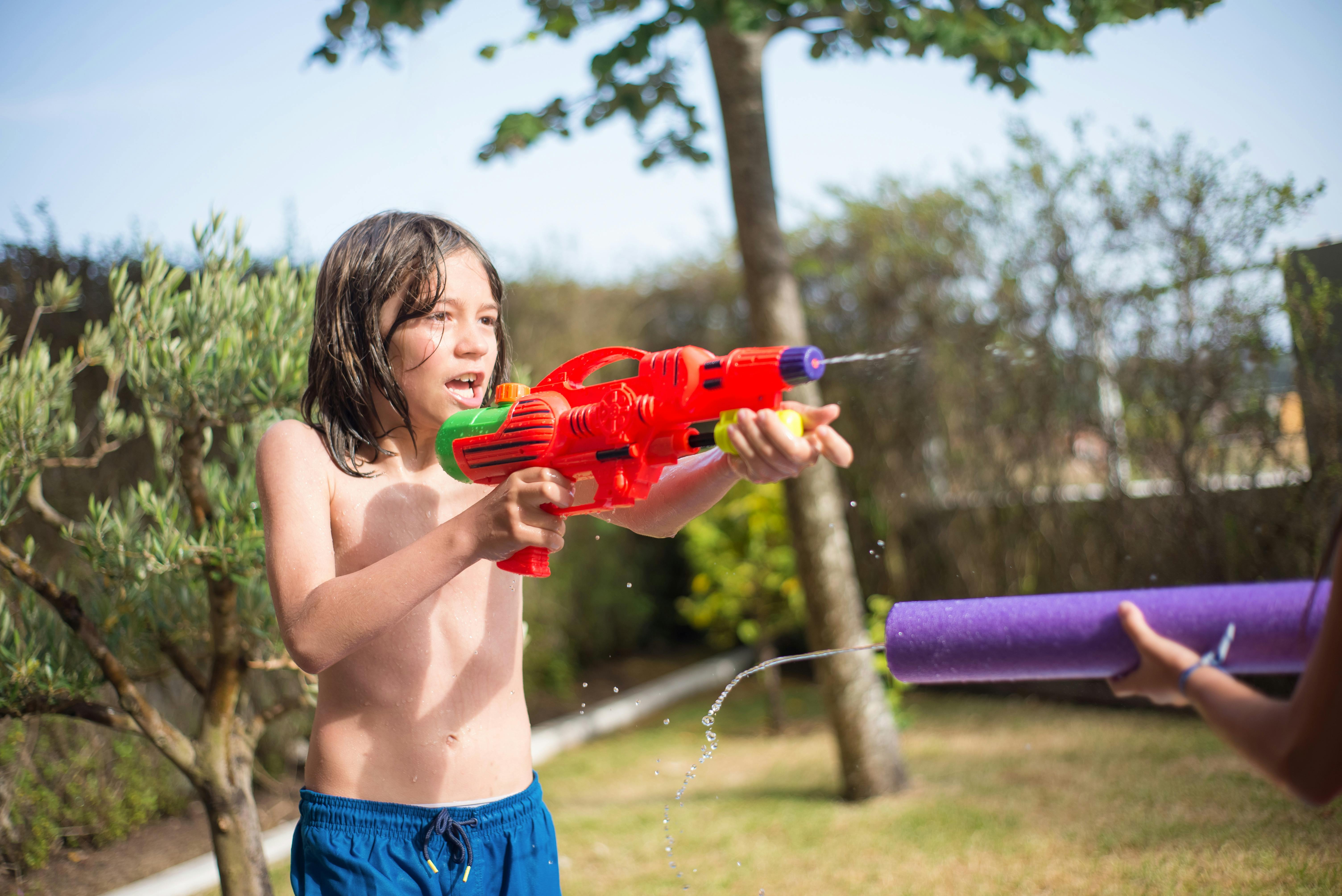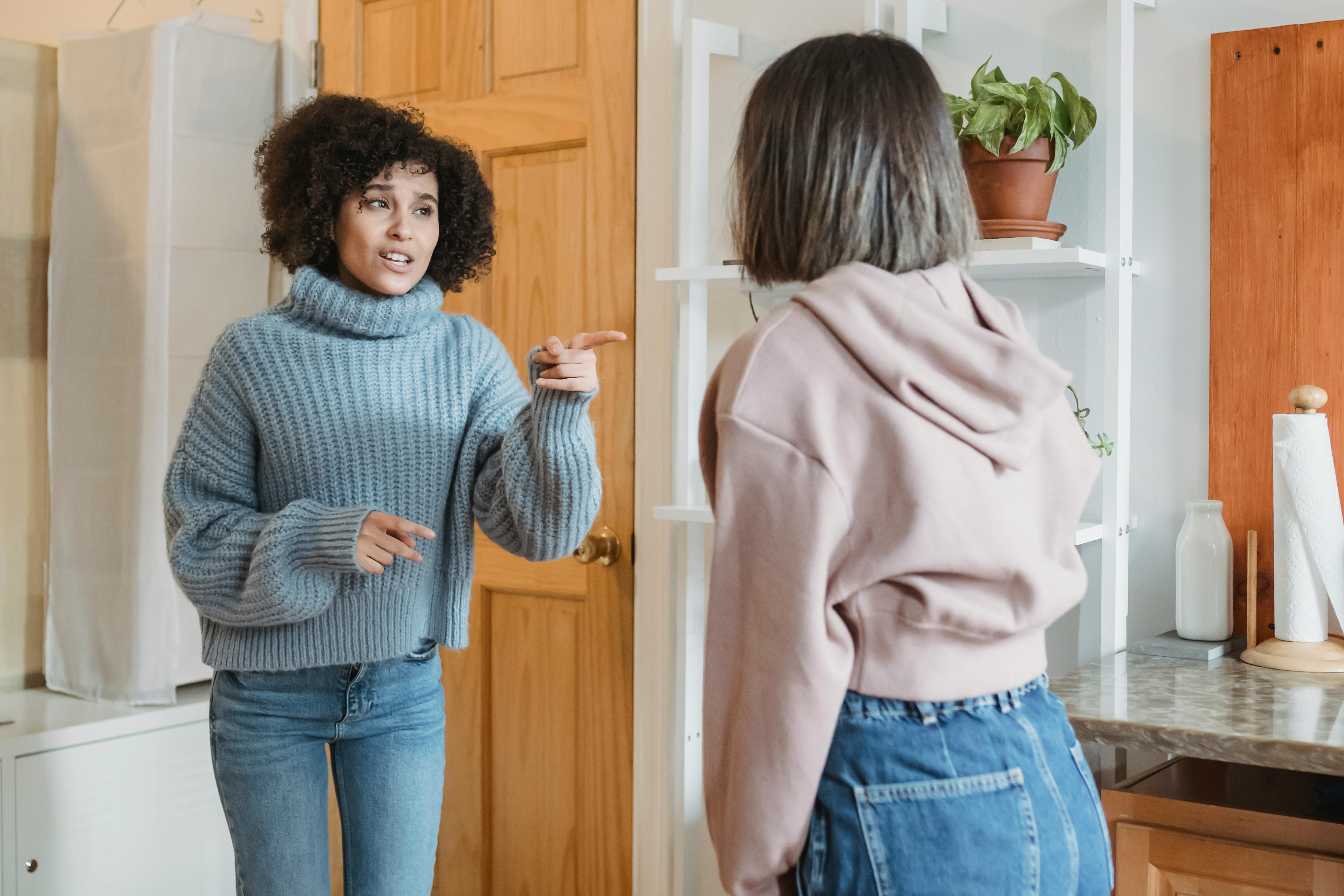
Older generations used to warn that people shouldn’t get tattoos because they’re permanent and someone may one day regret getting them. However, these days tattoo removal is an option. Although painful, it works after a few sessions but can leave behind some scarring. Either way, 35-year-old Leandro De Souza has decided to undergo laser treatments to remove almost 2 decades worth of ink.

Leandro De Souza is a native of Brazil and a proud father. However, his divorce almost a decade ago proved to be almost more than he could handle. As a result, De Souza went down a path of partying. During this time he accumulated more than 170 tattoos but his first ink was at just 13 years old. “I did the first one when I was 13,” De Souza explained. “The first ones were very much about the idolatry of the time.” However, he’s recently set out on a religious path of Evangelicalism. As a result, he’s decided to undergo the laser tattoo removal process.
Facing Heartbreak

Leandro’s first tattoos were inspired by his favorite bands, such as Nirvana, Guns N’ Roses, and Metallica. However, the majority of his tattoos were from a decade-long binge following his divorce. During that time, Leandro admittedly experimented with drugs like LSD, alcohol, and ecstasy.
Finding Motivation for Tattoo Removal

“I couldn’t stand the life I was living anymore. I was an attraction at (events I attended) and it felt like a circus animal.” He said regarding his decision for tattoo removal. De Souza was visiting a shelter almost a decade after his difficult divorce. This visit would change the course of his life. “The first step in everything in life is to accept that you can’t do it alone, that you are an addict, that you are a drug addict,” de Souza said. “And I managed to do that, I entered the municipal shelter in Bagé. Within a week, there was a lady who referred me and started to evangelize me.“
Turning a New Leaf

It’s been 2 years since De Souza changed his life and opted for tattoo removal. However, it’s a long process that will be more so for De Souza’s 170 tattoos. Moreover, he now spends his time speaking with “parents and children in homes that are in prisons.”
Leandro began the tattoo removal process with the help of a tattoo studio in Franco da Rocha, São Paulo, which heard about the exciting changes Leandro was making to turn his life around. He’s now been clean from alcohol for 3 years, and free of tobacco and other substances for a year. De Souza still has 6 more tattoo removal sessions before his ink is gone and his transformation, so far, is astonishing and awe-inspiring.
Tattoo Removal is a Modern Possibility

For many, getting a tattoo is inspired by the desire to express one’s creativity, treating their body like a canvas. However, others may regret their ink choices as they mature or their interests and relationship status change. Fortunately, tattoo removal is possible with advancing technology but there are a few side effects like tenderness, skin irritability, and even scarring.
Tattoo Removal Methods

Interestingly, tattoo removal comes with options. De Souza’s treatment, laser tattoo removal, uses lasers to “heat the ink particles,” breaking them down and making it “easier for your immune system to remove,” according to Cleveland Clinic. Laser tattoo removal sessions are scheduled about 3 months apart and can last anywhere from 30 minutes to an hour depending on the size of the ink. This method does come with side effects that range from mild skin irritation to painful blisters, but each person responds differently to treatment.
Skin Removal for Tattoo Removal

Another option for tattoo removal is surgical excision. The medical procedure requires a surgeon, who will “cut out the skin that contains a tattoo.” Then they will “stitch your remaining skin together.” The procedure probably sounds intimidating but it’s only used for small tattoos, as cutting an entire back tattoo and then stitching it up would be unpleasant, dangerous, and seemingly impossible.
Meanwhile, dermabrasion and chemical peels are used to remove the outer layers of skin. Unfortunately, both can cause severe skin sensitivity, especially in sunlight. Therefore, understanding the risks and how to treat the skin properly as it heals is essential to your skin’s health and physical comfort.
Not Recommended by Professionals

Lastly, and possibly least popular and effective, are tattoo removal creams. They can be used at home and often take months or years to yield results. Furthermore, they contain acids that “irritate or damage your skin.” As such, they’re usually advised against by medical professionals.
Can Anyone Get Tattoo Removal

In short, yes. However, some things are worth noting when considering tattoo removal. Firstly, tattoo removal takes time and similar or repetitive steps to be effective, regardless of your chosen tattoo removal method. The reason for this is that a tattoo artist applies ink in layers of the skin, so layers have to be broken down which can’t happen in one sitting, otherwise you’ll suffer severe and irreversible skin damage. Ultimately, that would put your overall health and immunity at risk. Additionally, your skin needs time between sessions to “flush out the ink” so, it’s recommended to wait a few weeks or months between most tattoo removal options listed above.
Secondly, certain ink colors are easier to remove than others. For example, blue and black are easy to remove during laser tattoo removal because “they’re better at absorbing light.” Meanwhile, colors like red are difficult to remove because their “molecular composition” is more resistant to the treatment options.
An Alternative

Consider having them turned into something else, rather than removed. For instance, if you’re considering tattoo removal and the reason has nothing to do with necessity, for work, or because, like De Souza, you’re on a new path. Instead, you don’t like how it looks anymore, have separated from the person who inspired the tattoo, or have other interests. In this case, you might consider another visit to the tattoo shop to have them create something else by covering the existing tattoo. For many, this option may be more satisfying and less time-consuming.
Minha vizinha se recusou a impedir que seus filhos jogassem pistolas de água sobre minha cerca – Eu dei a ela um gostinho do próprio remédio

Eu sou Amy. Meu namorado, Zach, e eu nos mudamos para nossa nova casa em novembro passado. Nossos vizinhos são uma mãe solteira, Sarah, e seus dois filhos, Richard e Bill, de sete e doze anos. Quando nos mudamos, Sarah foi muito doce e acolhedora. Seus filhos também nos cumprimentavam às vezes. Isso não durou muito.
A casa e a vizinhança são lindas, mas não temos tido muito tempo ensolarado ultimamente. Recentemente, porém, melhorou, e tivemos alguns dias quentes. Alguns fins de semana atrás, Zach e eu estávamos aproveitando um dia particularmente ensolarado sentados em nosso jardim. Podíamos ouvir os filhos de Sarah brincando no jardim ao lado. Não nos importamos até que um jato de água passou por cima da cerca e me atingiu bem no rosto.

Uma casa em um bairro tranquilo | Fonte: Pexels
“Zach!”, gritei, enxugando a água dos meus olhos.
Zach olhou para cima, confuso. “O que aconteceu?”
“Água”, eu disse com meus olhos ardendo. “Por que tem água vindo do nada?”

Água sendo pulverizada | Fonte: Pexels
Naquele momento, outro jato de água passou por cima da cerca, atingindo nossos móveis de jardim e plantas. Nós corremos para levar nossos livros e o resto do nosso pequeno piquenique para dentro antes que tudo ficasse encharcado.
Com a água ainda voando sobre a cerca em intervalos, decidi subir para ver o que estava acontecendo do lado de Sarah. Da janela, vi seus dois meninos com enormes pistolas de água, mirando sobre a cerca e borrifando nosso jardim.

Um menino com pistolas de água | Fonte: Unsplash
Corri de volta para baixo. “Zach, são Rich e Bill com pistolas de água! E eles ainda estão fazendo isso!”
Zach já estava na cerca, chamando. “Richard! Bill! Por favor, parem de jogar água aqui!”
Os meninos ficaram quietos e desapareceram. Mas não mais do que dois minutos depois, assim que Zach se secou e entrou na cozinha para pegar seu livro, eles começaram de novo. Os jatos de água eram implacáveis.

Meninos brincando com uma pistola de água | Fonte: Pexels
Suspirei. “Isso está ficando ridículo.”
Zach assentiu. “Vou falar com Sarah.”
Ele andou até a porta da frente de Sarah e bateu. Depois de um momento, ela atendeu, parecendo perturbada.
“Oi, Zach”, ela disse. “Está tudo bem?”

Homem batendo em uma porta | Fonte: Pexels
“Ei, Sarah”, Zach respondeu. “Os meninos estão jogando água por cima da cerca em nosso jardim. Você pode pedir para eles pararem?”
Sarah franziu a testa. “Oh, sinto muito. Vou falar com eles imediatamente.”
Zach retornou ao nosso jardim. “Ela disse que falará com eles.”
Eu assenti, esperando que fosse o fim disso. Mas alguns minutos depois, os jatos de água começaram de novo.

Uma mulher frustrada | Fonte: Pexels
“Isso é inacreditável”, murmurei. “Eles simplesmente não param.”
Zach suspirou. “Talvez eu devesse tentar falar diretamente com os meninos.”
Ele voltou para a cerca e chamou novamente. “Richard, Bill, por favor, parem de jogar água no nosso jardim. Não é legal.”
As vozes dos meninos se aproximaram. “Mas é divertido!”, disse Richard.

Mulher zangada | Fonte: Pexels
“Estamos apenas brincando!”, Bill acrescentou.
Zach tentou ficar calmo. “Eu entendo, mas está molhando nossos móveis e plantas. Por favor, encontre outra coisa para fazer.”
Houve um breve silêncio. “Ok”, Richard disse relutantemente.
Esperamos, ouvindo. Por um momento, pareceu que eles finalmente pararam. Mas então, outro jato de água passou por cima da cerca.

Um menino brincando com uma pistola de água | Fonte: Pexels
Eu levantei minhas mãos em frustração. “O que fazemos agora?”
Zach pareceu pensativo. “Talvez precisemos falar com Sarah novamente. Ela parecia compreensiva antes.”
Nós dois estávamos frustrados com os meninos continuando a jogar água por cima da cerca. Dessa vez, fui até a porta ao lado e toquei a campainha. Sarah atendeu, e eu disse a ela que os filhos dela continuavam jogando água por cima da nossa cerca. Achei que ela seria compreensiva como foi com Zach, mas ela pareceu realmente ofendida.

Mulher em uma discussão | Fonte: Pexels
“Amy, você está exagerando”, ela disse, cruzando os braços. “Eles são apenas crianças sendo crianças.”
Tentei explicar melhor, mas ela me cortou. “Olha, vou dizer para eles pararem mais uma vez, mas não vou policiar meus filhos brincando. É só água; não vai causar nenhum dano.”

Mulheres em uma discussão | Fonte: Pexels
Agora, devo admitir, não me dou bem com confrontos. Pensei que ela seria gentil, mas sua resposta me deixou sem nada a dizer. Então, meio que congelei. Sarah esperou um segundo, depois fechou a porta na minha cara, e eu simplesmente fui para casa.
Zach e eu decidimos assistir a um filme, mas antes de fecharmos a porta dos fundos para o dia, notei que a água tinha destruído minha guirlanda com luzes que pendia sobre nossa mesa de jardim. Suspirando, deixei-a pendurada e entrei.

Uma guirlanda com luzes | Fonte: Pexels
Poucos dias depois desse confronto, decidi convidar todos os vizinhos para uma festa no jardim. Contei a todos que era uma festa de pistola de água para as crianças, mas não contei a Sarah. Quando Sarah chegou, ela estava toda arrumada, usando maquiagem e um vestido de coquetel. Assim que ela pisou no jardim, as crianças imediatamente a atacaram, deixando-a encharcada.
“O que diabos?” Sarah engasgou, olhando ao redor em choque.

Uma mulher em um vestido | Fonte: Pexels
“Ah, é só água”, eu disse, tentando suprimir um sorriso. “Não faz nenhum dano. Devo ter esquecido de dizer para você trazer um conjunto de roupas secas.”
Sarah pareceu humilhada e saiu rapidamente da festa. As crianças continuaram brincando, e todos os outros pareciam estar se divertindo. Eu me senti um pouco culpada, mas aliviada que os meninos não estavam mais causando problemas.

Crianças brincando com pistolas de água | Fonte: Pexels
De repente, Sarah voltou, agora usando roupas casuais e segurando uma nova guirlanda com luzes. Ela andou direto até mim.
“Aqui”, ela disse, me entregando a guirlanda. “Está tão escuro aqui; talvez agora os meninos vejam melhor em quem eles jogam as pistolas de água.”
Não pude deixar de rir da maneira casual como ela lidou com o problema. “Obrigada, Sarah. Eu aprecio isso.”

Mulher segurando guirlanda de luzes | Fonte: Pexels
Sarah assentiu e sorriu. “Sem ressentimentos, ok? Crianças podem ser difíceis, mas elas não querem fazer mal.”
“Claro”, eu disse, sentindo a tensão derreter. “Vamos aproveitar a festa.”
O resto da noite correu bem. As crianças brincaram com suas pistolas de água, e os adultos conversaram e riram. Conforme o sol se punha e as novas luzes da guirlanda brilhavam, Sarah e eu realmente nos conhecemos.

Uma festa no quintal | Fonte: Pexels
“Sabe, eu posso ter exagerado outro dia. É que tem sido difícil administrar tudo sozinho.”
“Eu entendo”, eu disse. “Todos nós temos nossos momentos. Honestamente, eu admiro você por criar os meninos sozinha. E eles são bons garotos.”
Ela sorriu, e nós brindamos com nossos copos. Os meninos dela estavam se divertindo muito, desculpe o trocadilho, com suas pistolas de água, e Zach e eu até tivemos a oportunidade de conhecer mais de nossos vizinhos.

Duas mulheres conversando | Fonte: Pexels
E, para ser honesto, esse é exatamente o bairro unido que estávamos procurando. E eu tenho que agradecer a um par de canalhas com pistolas de água por isso.
Como você teria lidado com isso?
Aqui está outra história que você pode gostar:
Meus novos vizinhos me intimidaram, então meu único filho me ajudou a ensinar-lhes uma lição valiosa
Depois que Maureen perde o marido, seu filho a encoraja a se mudar para mais perto dele e de sua família. Então, ela faz as malas e se muda para um bairro mais perto dele. Mas, conforme ela se estabelece, ela percebe que as pessoas não são tão amigáveis quanto parecem. Maureen pode conquistá-los ou ela deve se mudar novamente?
Imagine se encontrar no crepúsculo da sua vida, em um novo lugar — sem seu marido de 50 anos.
Recentemente, William, meu marido, faleceu, deixando-me em nossa casa enorme na Virgínia. Estou aqui há muito tempo e tive meu coração partido por muitas coisas. Mas nada prepara você para perder seu cônjuge.

Um casal de idosos em pé na estrada | Fonte: Pexels
“Mãe, por favor”, meu filho, Mark, disse ao telefone. “Preciso que você considere se mudar. Apenas venha e fique mais perto de nós — as crianças vão adorar ter você aqui.”
“Não quero perder minha independência, filho”, eu disse. “Seu pai e eu prometemos não nos envolver em sua vida desse jeito.”
“Você não precisa morar comigo”, ele riu. “Eu vou encontrar um lugar aqui perto para você. Vou começar a procurar e te mandar opções. Ok? Por favor, mãe.”

Um homem falando ao telefone | Fonte: Pexels
Tive que ceder. Aos setenta anos, e embora me sentisse absolutamente bem e saudável, não sabia se morar sozinha, tão longe de Mark, seria uma boa ideia.
“Tudo bem”, eu disse. “Você pode começar a procurar, e eu começo a resolver as coisas aqui.”
Quando William faleceu, uma parte de mim também faleceu. O mundo de repente ficou menos vibrante, os dias pareciam mais longos e o silêncio em nossa casa se tornou sufocante.

Flores em um caixão fechado | Fonte: Unsplash
Passei as noites na cozinha, preparando novos lotes de scones — mais do que eu conseguia comer, o que me levou a enviá-los para meus vizinhos.
Éramos todos muito próximos, e William e eu costumávamos dar festas para todos no nosso quintal.
“Você realmente vai nos deixar, Maureen?”, disse minha vizinha e amiga íntima, Shelley.
“Não está escrito em pedra”, eu disse, servindo chá em xícaras para nós. “Mas faz mais sentido para mim estar perto de Mark. Não estamos ficando mais jovens.”
“Então, você tem que dar outra festa lendária antes de ir embora”, Shelley sorriu.
Leia o restante aqui .
Este trabalho é inspirado em eventos e pessoas reais, mas foi ficcionalizado para fins criativos. Nomes, personagens e detalhes foram alterados para proteger a privacidade e melhorar a narrativa. Qualquer semelhança com pessoas reais, vivas ou mortas, ou eventos reais é mera coincidência e não intencional do autor.
O autor e a editora não fazem nenhuma reivindicação quanto à precisão dos eventos ou à representação dos personagens e não são responsáveis por nenhuma interpretação errônea. Esta história é fornecida “como está”, e quaisquer opiniões expressas são as dos personagens e não refletem as opiniões do autor ou da editora.



Leave a Reply